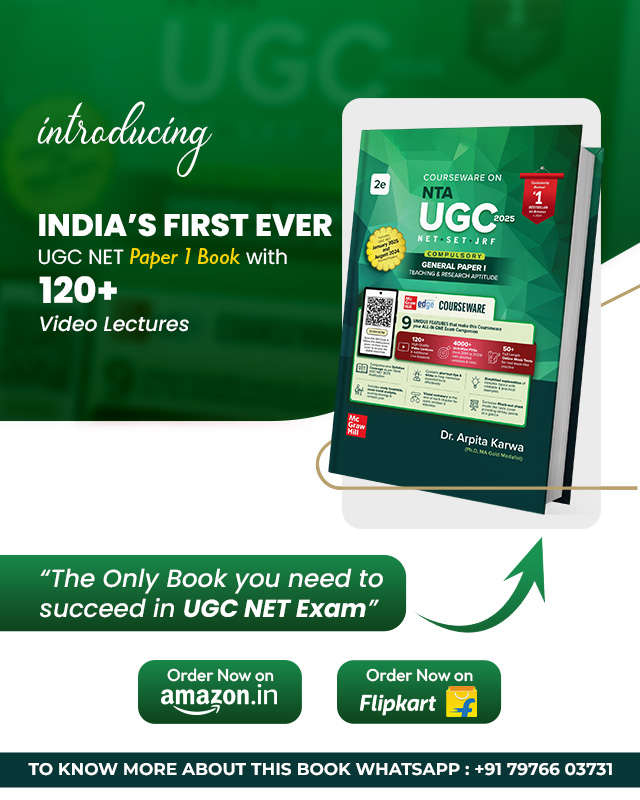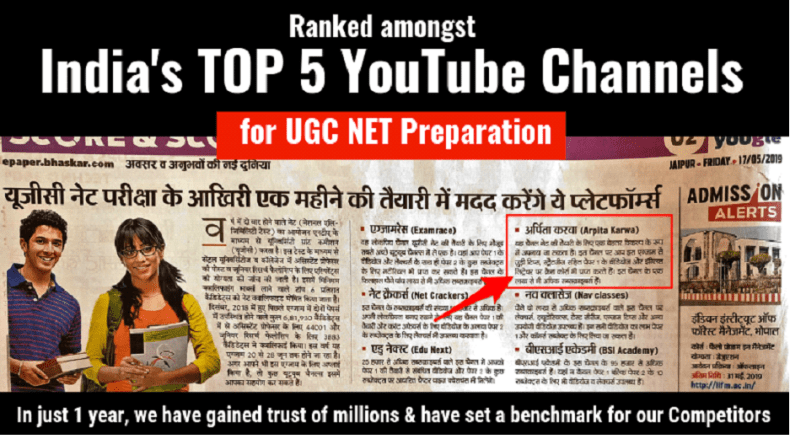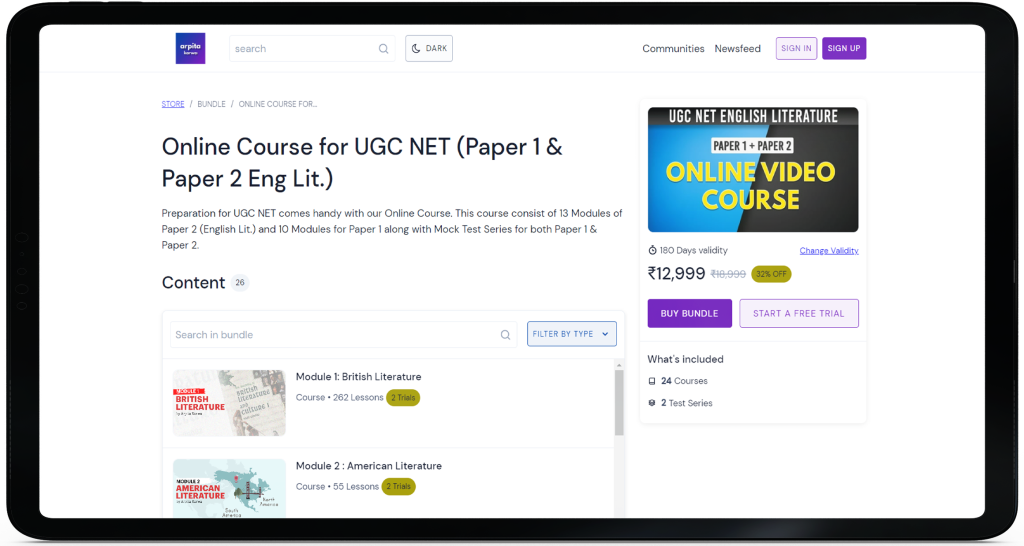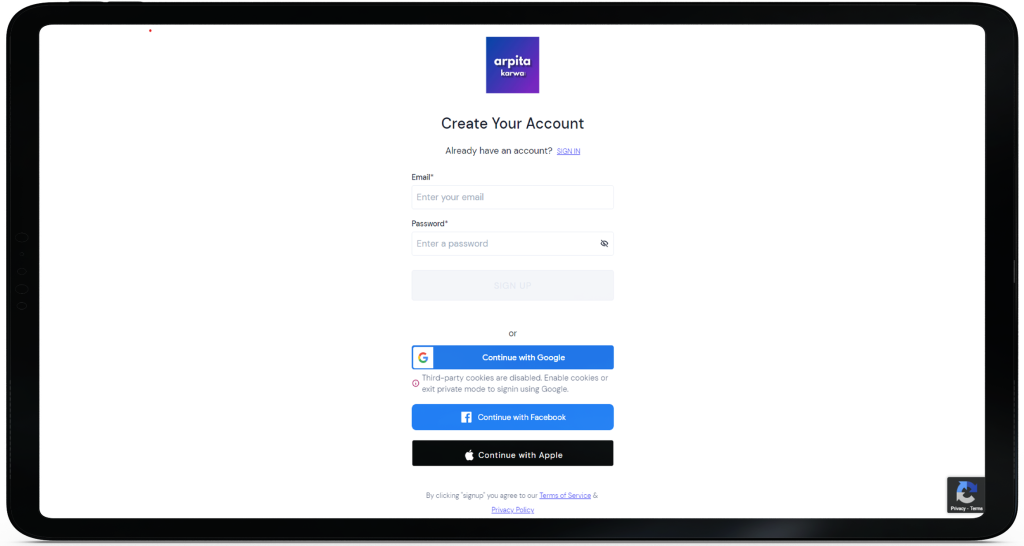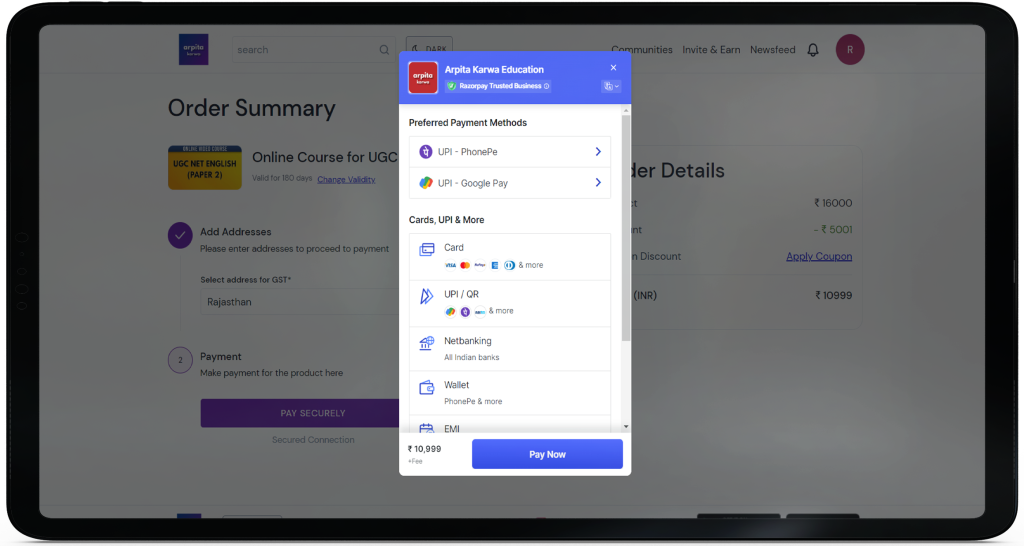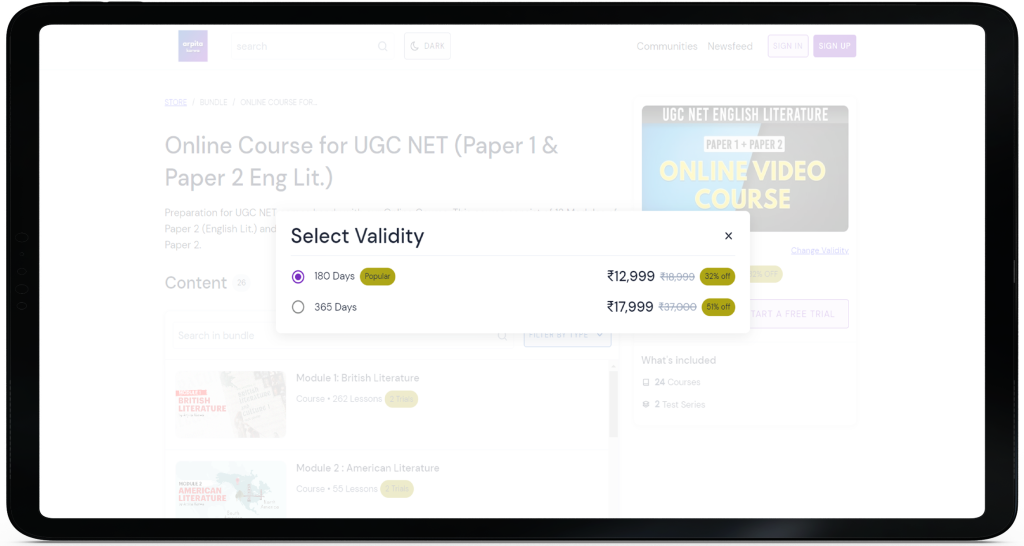Rajasthan Set 2
June 20, 2023 2023-12-18 16:13Rajasthan Set 2
Rajasthan Set 2
Q.1) “The General Prologue to The Canterbury Tales describes the meeting of the pilgrims in
(1) The Westminster Abbey
(2) The Tabard Inn
(3) The Hyde Park
(4) The Inns of Court
Q.2) In which of the following poems does the author celebrate his own wedding?
(1) Prothalamion:
(2) Amoretti
(3) Epithalamion
(4) Annus Mirabilis
Q.3) “Cut is the branch that might have grown full straight
And burned is Apollo’s laurel bough
That sometimes grew within this learned man”
These lines occurs in
(1) King Lear
(2) Doctor Faustus:
(3) The Jew of Malta
(4) Paradise Lost
Q.4) Which of the following plays contains (The Mouse-Trap) within it?
(1) The Duchess of Malfi
(2) Pygmalion
(3) A Midsummer Night’
(4) Hamlet
Q.5) Who among the following was looked upon as a close approximation of the Renaissance ideal of the gentleman?
(1) Edmund Spenser
(2) John Donne
(3) John Milton
(4) Philip Sidney
Q.6) Lovewit is a character in
(1) The Way of the World
(2) Volpone
(3) School for Scandal
(4) The Alchemist
Q.7) Religio Medici was written by
(1) Sir Thomas Browne
(2) Robert Browning
(3) John Milton
(4) Jonathan Swift
Q.8) Who said of Milton’s Lycidas” that “the diction is harsh, the rhymes uncertain, and the numbers unpleasing”?
(1) CS Lewis
(2) William Wordsworth
(3) Samuel Johnson
(4) Charles Lamb
Q.9) Dryden’s All for Love was written in imitation of Shakespeare’s
(1) Antony and Cleopatra
(2) Romeo and Juliet
(3) The Merchant of Venice
(4) Twelfth Night
Q.10) T S Eliot, in his essay “The Metaphysical Poets argues that most of the Metaphysical poets
(1) Digressed from the main current of English poetry
(2) Were in the mainstream of English poetry
(3) Successfully achieved a dissociation of sensibility
(4) Wrote poetry which was never analytic
Q.11) Sir Roger de Coverley was first introduced as a character in The Spectator by
(1) Joseph Addison
(2) Sir Andrew Freeport
(3) Lord Rochester
(4) Richard Steele
Q.12) The Earl of Shaftesbury sought to exclude James from the throne and supplant him with the Duke of Monmouth This is recorded in the famous poem called
(1) Absalom and Achitophel
(2) Mac Flecknoe
(3) Religio Larci
(4) Astrea Redux
Q.13) What was the name of the group of intellectual women who established literary clubs under the leadership of Elizabeth Vesey and Elizabeth Montagu?
(1) The Behnites
(2) The Blustockings
(3) The Pre-Raphaelites
(4) The Tattlers
Q.14) Who among the following is the odd one our?
(1) Moll Flanders
(2) Colonel Jacque
(3) Gulliver’s Travels
(4) Robinson Crusoe
Q.15) Which of the following pairs is incorrect?
(1) James Boswell – The Life of Samuel Johnson
(2) Samuel Johnson – The Vanity of Human Wishes:
(3) Henry Fielding – The Fable of Bees
(4) Jane Austen-Sense and Sensibility
Q.16) The Gothic Novel is associated with
(1) Henry Fielding
(2) Horace Walpole
(3) Laurence Sterne
(4) TG Smollett
Q.17) Arrange the following authors in order of their emergence on the literary scene:
(A) James Thomson
(B) Horace Walpole
(C) William Collins
(D) Thomas Gray
Codes:
(1) BDAC
(2) ABCD
(3) BACD
(4) DCBA
Q.18) Identify the essayist whose essays show a marked sympathy for street children:
(1) Addison
(2) Lamb
(3) Arnold
(4) Eliot
Q.19) “Poets are the unacknowledged legislators of the world”
This was asserted by
(1) Shelley
(2) Coleridge
(3) Arnold
(4) Eliot
Q.20) In the Romantic period, which author developed a new novelistic language to express the working of the mind in a flux?
(1) William Blake
(2) George Byron
(3) Walter Scott
(4) Jane Austen
Q.21) In the book Culture and Anarchy, the word “Philistines” is used for the
(1) Working class
(2) Aristocracy
(3) Middle Class
(4) Upper Class
Q.22) Elizabeth Barrett Browning’s poem The Cry of the Children is concerned with the issue of
(1) Colonial rule
(2) Child labour
(3) Women’s rights
(4) Victorian orthodox views
Q.23) Which of the following does not match correctly?
(1) Oliver Twist-Charles Dickens
(2) Adam Bede – George Eliot
(3) Wuthering Heights-Charlotte Bronte
(4) Vanity Fair-William Thackeray
Q.24) Choose the option that would fit into the blanks:
Man for the field and women for the………
Man for the sword and for the… she
Man with the head and woman with the……
Man to command and woman to……
(1) Home; kitchen; soul; permit
(2) City, Sceptre; hand; agree
(3) School; spearl foot; free
(4) Hearth; needle; heart; obey
Q.25) Charles Dickens’s Hard Times centrally deals with
(1) Moral problems
(2) Religious and church issues
(3) Political turmoil
(4) Social and industrial problems
Q.26) Who is the exponent of the ‘Life force theory?
(1) Galsworthy
(2) Ibsen
(3) Brecht
(4) Shaw
Q.27) March List with List 2 and select the correct answer by using the codes given below the lists
List 1
(A) A Bemard Shaw
(B) W B Yeats
(C) Dylan Thomas
(D) Philip Larkin
List 2
(1) Fern Hill
(2) The Whitsun Weddings
(3) Arms and the Man
(4) When You are Old and Grey
Codes:
A. (a)-3, (b)-1, (c)-2, (d)-4
B. (a)-2, (b)-4, (c)-1, (d)-3
C. (a)-3, (b)-4, (c)-1, (d)-2
D. (a)-1, (b)-3, (c)-2, (d)-4
Q.28) Choose the option that states the chronological order of the publication of the novels mentioned
(1) Sons and Lovers – The Rainbow-Women in Love-Lady Chatterley’s Lover
(2) The Rainbow-Women in Love – Lady Chatterley’s Lover-Sons and Lovers
(3) Woman in Love-Lady Chatterley’s Lover-Sons and Lovers – The Rainbow
(4) Sons and Lovers – Women in Love- The Rainbow-Lady Chatterley’s Lover
Q.29) Which of the following novels explores the basic human relationships across three generations?
(1) Sons and Lovers
(2) The Longest Journey
(3) Ulysses
(4) The Rainbow
Q.30) The line “only through time Time is conquered” occurs in Eliot’s
(1) Gerontion
(2) The Wasteland
(3) Ash Wednesday
(4) Burnt Norton
Q.31) Which of the following novels offers alternative endings?
(1) Lord of the Flies
(2) The Power and the Glory
(3) The French Lieutenant’s woman
(4) Lucky Jim
Q.32) Ted Hughes’s Birthday Letters
(1) Is a collection of letters the poet received on his birthday
(2) Explores the complex history of England
(3) Describes his relationship with Sylvia Plath
(4) Is a collection of letters the poet wrote on his children’s birthdays
Q.33) Which of the following is not correct?
(1) 1958-Harold Pinter The Birthday Party
(2) 1960-Harold Pinter The Caretaker
(3) 1964-Harold Pinter The Homecoming
(4) 1985 Harold Pinter-gets the Novel Prize:
Q.34) Which of the following pieces of travel writing is by William Dalrymple?
(1) India Unbound
(2) In Xanadu: A Quest
(3) The Grand Tour
(4) Great Indian Railway Bazar
Q.35) The novel The Prime of Miss Jean Brodie is set in
(1) London
(2) Oxford
(3) Edinburgh
(4) Glasgow
Q.36) In Wole Soyinka’s play the Lion and the Jewel
(1) Sidi is the lion and Barok is the jewel
(2) Baroka is the lion and Sidi is the jewel
(3) Sidi is the lion and Lakunle is the jewel
(4) Baroka is the lion and Lakunle is the jewel
Q.37) Baby Kochamma is a character in the novel
(1) The God of Small Things
(2) Samskara
(3) Rich Like Us
(4) Untouchable
Q.38) The Golden Gate is
(1) A verse novel
(2) An epic
(3) A novel
(4) A lyric
Q.39) Which of the following poets wrote an autobiography entitled My Story”
(1) Nissim Ezekiel
(2) A K Ramanujan
(3) Kamala Das
(4) R Parthasarathy
Q.40) “Home is where we have to gather graces” is the last line of Ezekiel’s
(1) The Night of the Scorpion
(2) Enterprise
(3) Poet lover and Birdwatcher
(4) Background, Casually
Q.41) The term ‘Critical Theory was first coined by School of Criticism in 1923
(1) Marxist
(2) Frankfurt
(3) Freudian
(4) Structuralist
Q.42) Match List 1 with List 2 and select the correct answer by using the codes given below the lists:
List 1
(A) Deconstruction
(B) New Criticism
(C) Structuralism
(D) Formalism
List 2
(1) FR Leavis
(2) Rene Wellek
(3) Jacques Derrida
(4) Saussure
Codes:
A. (a)-3, (b)-1, (c)-4, (d)-2
B. (a)-4, (b)-2, (c)-3, (d)-1
C. (a)-3, (b)-2, (c)-4, (d)-1
D. (a)-3, (b)-1, (c)-4, (d)-2
Q.43) The distinction between ‘tenor” and “vehicle” was formulated by
(1) Geoffrey Leech
(2) F R Leavis
(3) William Empson
(4) 1 A Richards
Q.44) “Amold is rather a propagandist for criticism than a critic” was said by
(1) Cleanth Brooks
(2) T S Eliot
(3) I A Richards
(4) David Daiches
Q.45) The doctrine of empiricism is best described by which of the following?
(1) There is no God
(2) All sensory experiences are illusory
(3) All knowledge is derived from experience
(4) Political power influences human perceptions
Q.46) The Spenserian stanza has
(1) Six lines rhymed abbeca
(2) Seven lines rhymed abcabee
(3) Eight lines rhymed ahabebee
(4) Nine lines rhymed ababbebce
Q.47) An allegory can be described as
(1) A conceit
(2) An extended metaphor
(3) An epigram
(4) A transferred epithet
Q.48) A rhetorical Question
(1) Is a Question without any purpose
(2) Is asked not to elicit information but to achieve a stylistic effect
(3) Is a rhetorical device used to elicit information on some specified point
(4) A method of seeking the truth by way of Questions and answers
Q.49) Which was not among the new genres promoted by poets such as Jonson, Donne and Herbert?
(1) The Petrarchan Sonnet
(2) The familiar essay
(3) The letter
(4) The travelogue
Q.50) Gray’s Progress of Poesy’ is an example of
(1) Horatian ode
(2) Pindaric ode
(3) Irregular ode
(4) Regular ode






